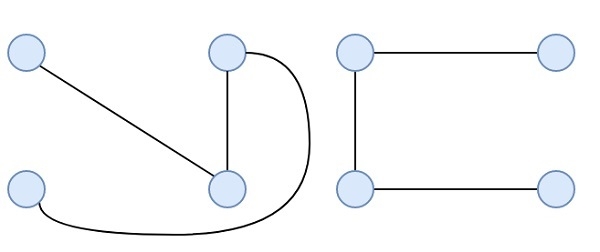
 Data Structure
Data Structure Networking
Networking RDBMS
RDBMS Operating System
Operating System Java
Java MS Excel
MS Excel iOS
iOS HTML
HTML CSS
CSS Android
Android Python
Python C Programming
C Programming C++
C++ C#
C# MongoDB
MongoDB MySQL
MySQL Javascript
Javascript PHP
PHP
- Selected Reading
- UPSC IAS Exams Notes
- Developer's Best Practices
- Questions and Answers
- Effective Resume Writing
- HR Interview Questions
- Computer Glossary
- Who is Who
Maximum Possible Edge Disjoint Spanning Tree From a Complete Graph in C++
Suppose we have a complete graph; we have to count number of Edge Disjoint Spanning trees. The Edge Disjoint Spanning trees are spanning trees, where no two trees in the set have an edge in common. Suppose the N (number of vertices) is 4, then output will be 2. The complete graph using 4 vertices is like below −

Two edge disjoint spanning trees are like −

The maximum number of edge disjoint spanning tree from a complete graph, with N vertices will be $[\frac{n}{2}]$
Example
#include <iostream>
#include <cmath>
using namespace std;
int maxEdgeDisjointSpanningTree(int n){
return floor(n/2);
}
int main() {
int n = 4;
cout << "Maximum Edge Disjoint Spanning Tree: " <<
maxEdgeDisjointSpanningTree(n);
}
Output
Maximum Edge Disjoint Spanning Tree: 2

Advertisements
